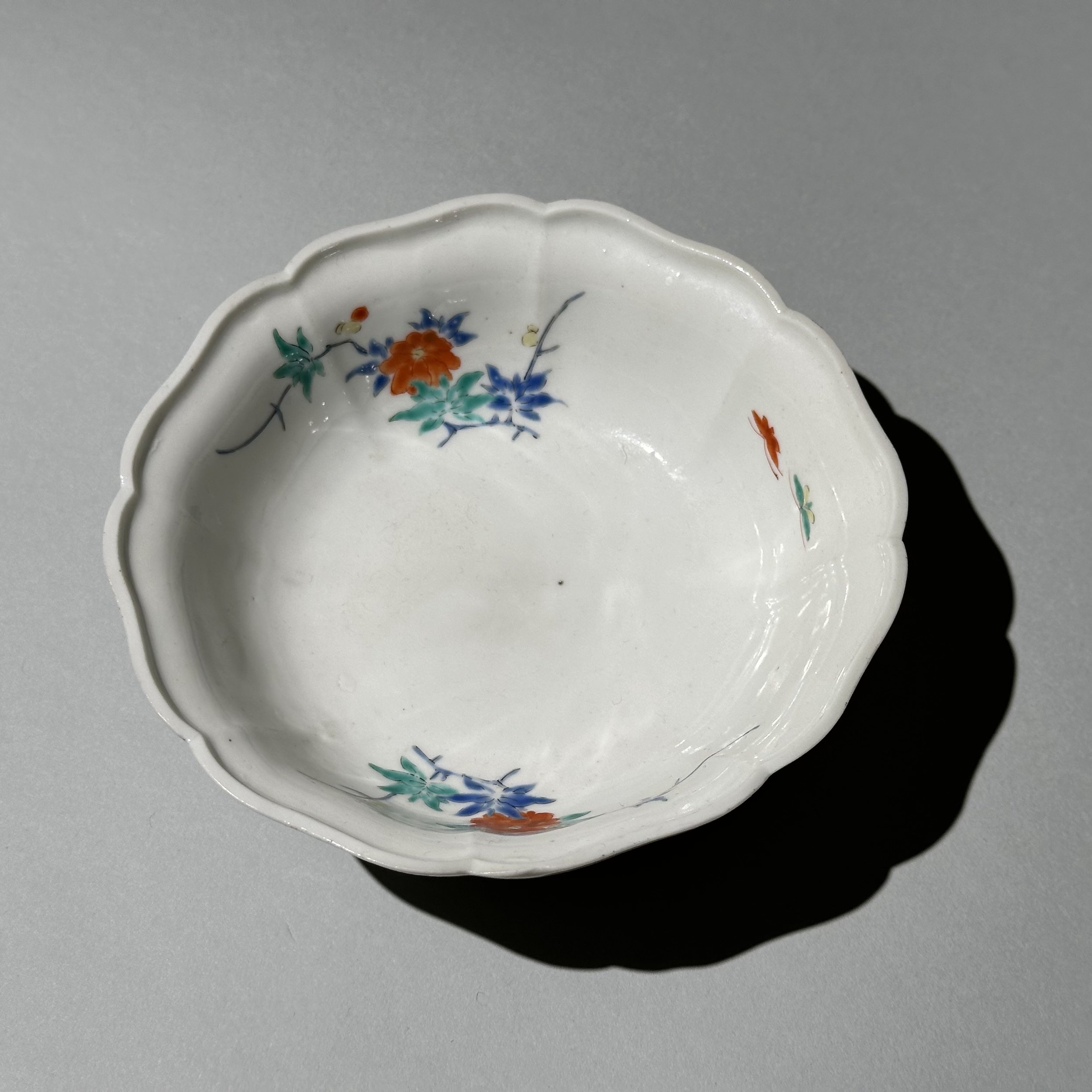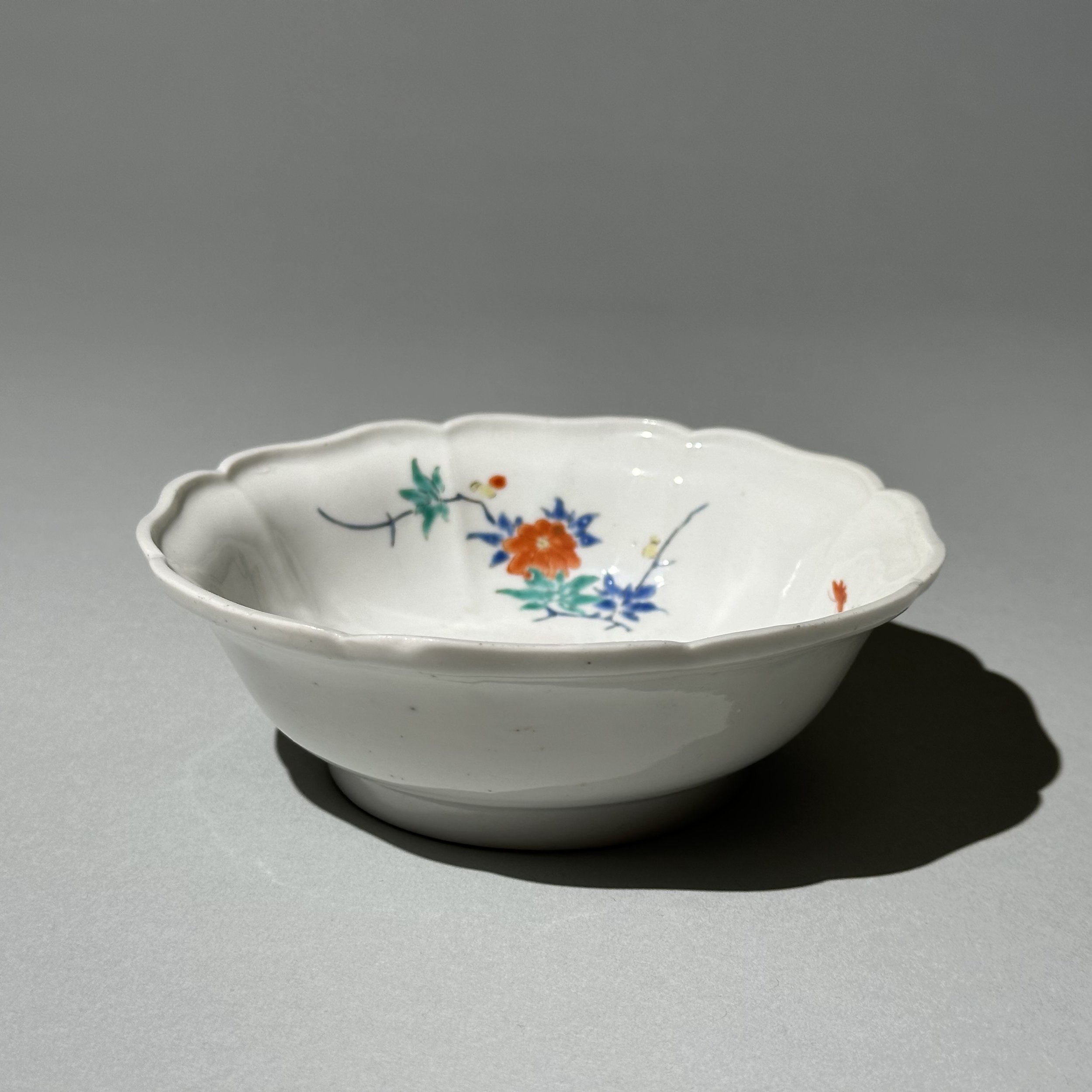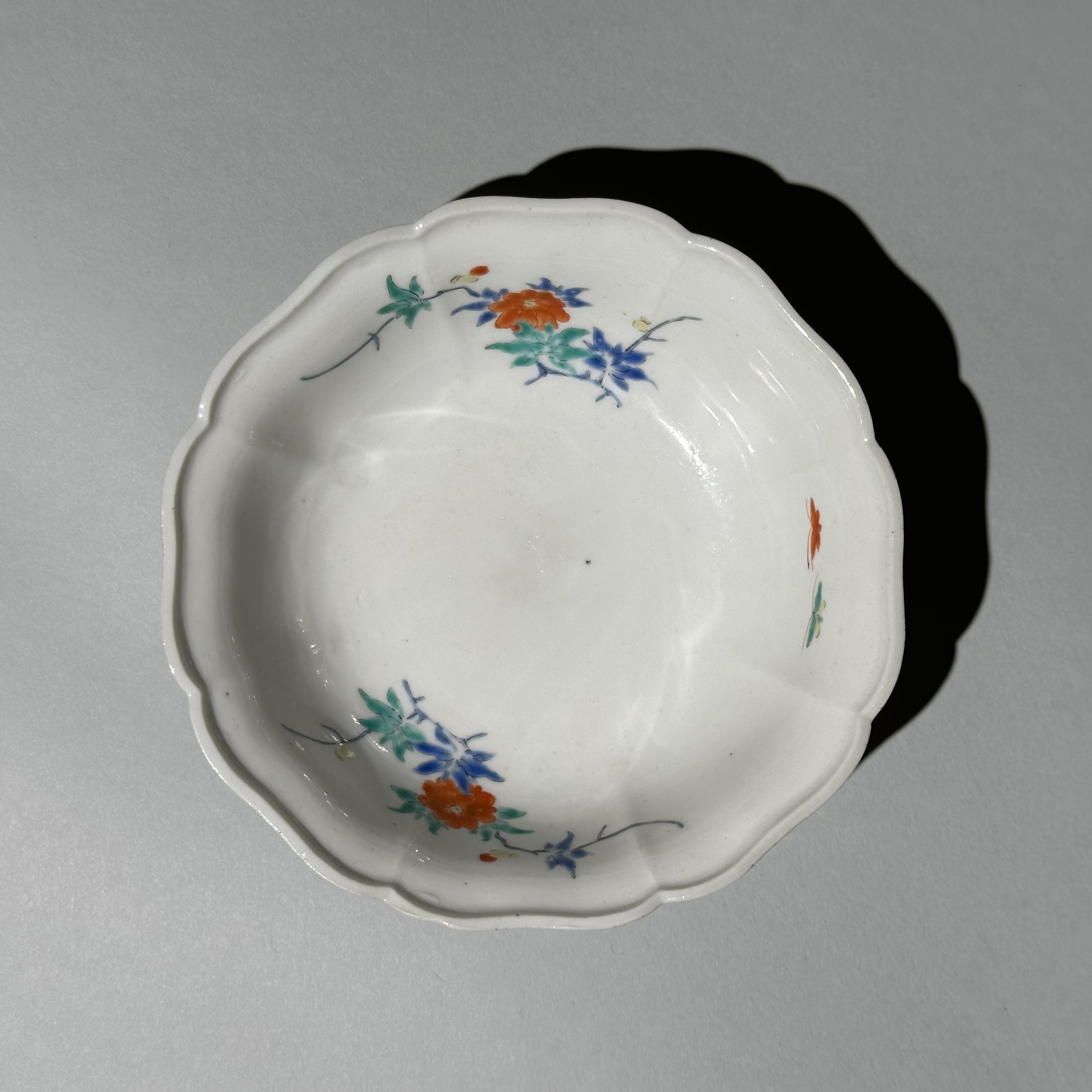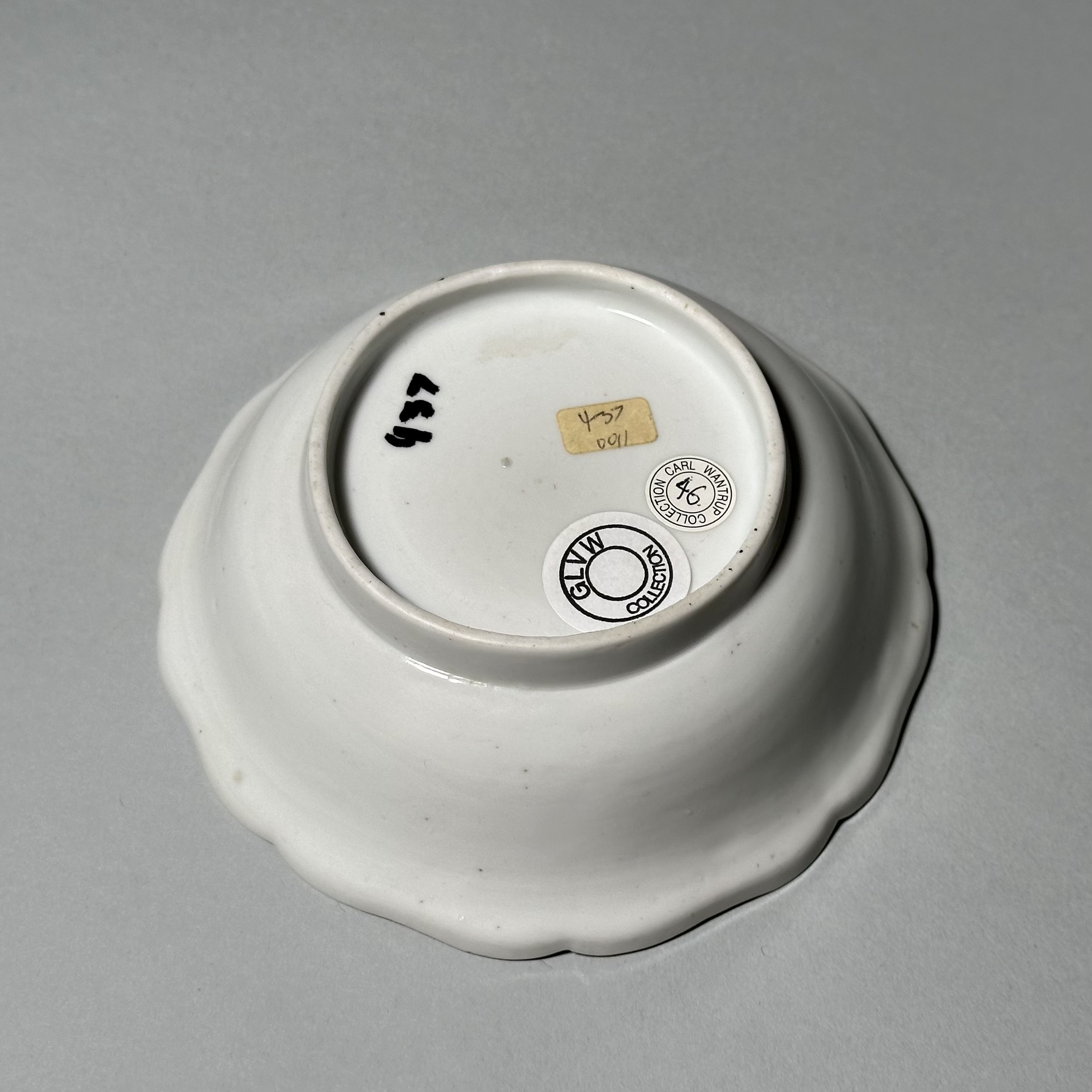 Image 1 of 7
Image 1 of 7

 Image 2 of 7
Image 2 of 7

 Image 3 of 7
Image 3 of 7

 Image 4 of 7
Image 4 of 7

 Image 5 of 7
Image 5 of 7

 Image 6 of 7
Image 6 of 7

 Image 7 of 7
Image 7 of 7








Kakiemon enamelled niu-hakude bowl
Japan, Hizen Province, Kakiemon kilns
Edo Period (1603-1868), 1680-1700
Of moulded octagonal form in milky-white niu-hakude porcelain with a lobed rim, decorated with flower sprays and butterflies in overglaze enamels. 4.5cm high, 14cm diameter. One very small chip to the rim. Provenance: Genine Wallinga Collection, Melbourne. Together with a cloth-bound box.
Catalogue 46.
Kakiemon
The title Kakiemon describes both a member of The Kakiemon family and a style of Arita enamel-decorated ceramics dating back to the 1660s. The name derives from the persimmon (J. kaki) as the red on early Kakiemon ceramics reminded people of the colour of the persimmon fruit. There are really two classes of ceramics that fall under this title. The first is the works attributed to the Kakiemon family. These are characterised by being highly refined and flawless in their manufacture, usually moulded and asymmetrically decorated in clear on-glaze enamels in a fairly sparse style. A more generic use, sometimes referred to as Kakiemon style, covers works that are on-glaze enamel decorated but often turned on a potter’s wheel and with denser decoration. Both forms are hand decorated and limited in their availability. It was this style of decoration that influenced early European ceramics (Bow, Meissen, Chantilly) and was the bridge between Japanese and European ceramics.
Japan, Hizen Province, Kakiemon kilns
Edo Period (1603-1868), 1680-1700
Of moulded octagonal form in milky-white niu-hakude porcelain with a lobed rim, decorated with flower sprays and butterflies in overglaze enamels. 4.5cm high, 14cm diameter. One very small chip to the rim. Provenance: Genine Wallinga Collection, Melbourne. Together with a cloth-bound box.
Catalogue 46.
Kakiemon
The title Kakiemon describes both a member of The Kakiemon family and a style of Arita enamel-decorated ceramics dating back to the 1660s. The name derives from the persimmon (J. kaki) as the red on early Kakiemon ceramics reminded people of the colour of the persimmon fruit. There are really two classes of ceramics that fall under this title. The first is the works attributed to the Kakiemon family. These are characterised by being highly refined and flawless in their manufacture, usually moulded and asymmetrically decorated in clear on-glaze enamels in a fairly sparse style. A more generic use, sometimes referred to as Kakiemon style, covers works that are on-glaze enamel decorated but often turned on a potter’s wheel and with denser decoration. Both forms are hand decorated and limited in their availability. It was this style of decoration that influenced early European ceramics (Bow, Meissen, Chantilly) and was the bridge between Japanese and European ceramics.
Japan, Hizen Province, Kakiemon kilns
Edo Period (1603-1868), 1680-1700
Of moulded octagonal form in milky-white niu-hakude porcelain with a lobed rim, decorated with flower sprays and butterflies in overglaze enamels. 4.5cm high, 14cm diameter. One very small chip to the rim. Provenance: Genine Wallinga Collection, Melbourne. Together with a cloth-bound box.
Catalogue 46.
Kakiemon
The title Kakiemon describes both a member of The Kakiemon family and a style of Arita enamel-decorated ceramics dating back to the 1660s. The name derives from the persimmon (J. kaki) as the red on early Kakiemon ceramics reminded people of the colour of the persimmon fruit. There are really two classes of ceramics that fall under this title. The first is the works attributed to the Kakiemon family. These are characterised by being highly refined and flawless in their manufacture, usually moulded and asymmetrically decorated in clear on-glaze enamels in a fairly sparse style. A more generic use, sometimes referred to as Kakiemon style, covers works that are on-glaze enamel decorated but often turned on a potter’s wheel and with denser decoration. Both forms are hand decorated and limited in their availability. It was this style of decoration that influenced early European ceramics (Bow, Meissen, Chantilly) and was the bridge between Japanese and European ceramics.
